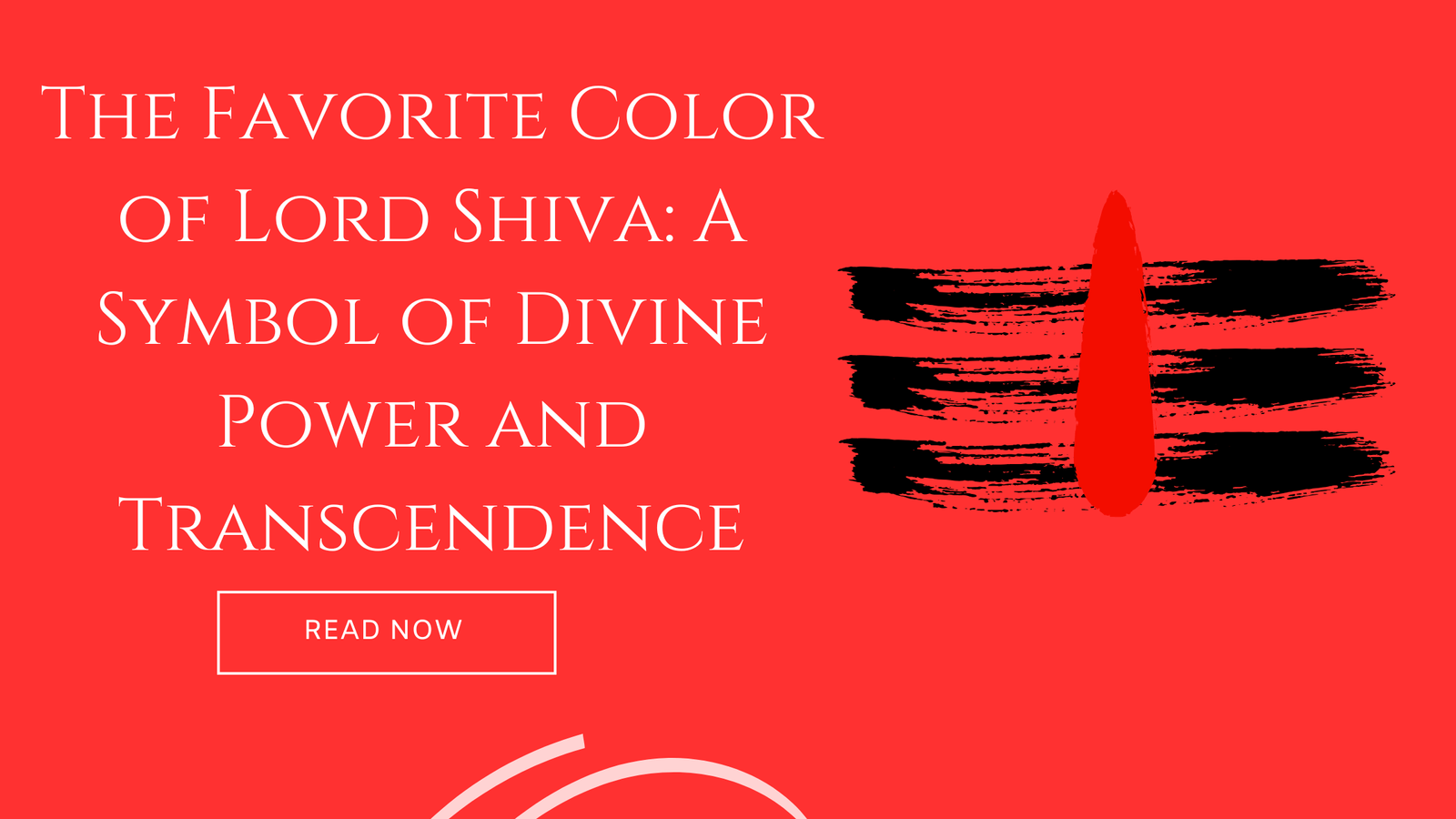The Favorite Color of Lord Shiva: A Symbol of Divine Power and Transcendence
Lord Shiva, one of the most revered deities in Hinduism, is often depicted with distinctive attributes that reflect his immense spiritual significance. He is a god of paradoxes—simultaneously the destroyer and the creator, the ascetic and the householder, the fierce and the compassionate. His appearance is unique, adorned with symbols that transcend time and space, and his association with colors holds deep spiritual meaning.
Among the many symbols associated with Lord Shiva, his connection with certain colors—especially the color white—is of special importance. In this blog, we explore the favorite color of Lord Shiva, the significance of colors in his worship, and how this divine hue is a symbol of his attributes and powers.
Lord Shiva’s Favorite Color: White
While Lord Shiva is often depicted in various colors across different forms and rituals, white is considered his most prominent and favorite color. It may seem paradoxical, given that Lord Shiva is also associated with darkness, destruction, and the unknown, but white, in this context, carries profound spiritual meanings that reflect his cosmic role.
Why is White the Favorite Color of Lord Shiva?
- Symbol of Purity and Detachment
- White, in its essence, represents purity, serenity, and detachment. Lord Shiva, as the god of ascetics, is not attached to the material world. He is often shown wearing white clothing and a garland of white flowers, signifying his transcendence from worldly desires.
- White symbolizes his pure and untainted nature—he exists beyond the cycles of birth and death. His ascetic lifestyle is reflected in the simplicity of the color white.
- Represents the Cosmic Nature of Lord Shiva
- White is also the color of the cosmos, symbolizing the infinite nature of Shiva. Just as the color white can encompass all colors of the spectrum, Lord Shiva is said to embody the entire universe and everything within it. He is the ultimate reality that transcends time and space.
- Shiva’s association with white represents the vastness and expansiveness of the universe, which he governs.
- Association with the Moon
- Lord Shiva is often depicted with the crescent moon adorning his matted hair, symbolizing his connection to time, change, and cycles. The moon, which is white, represents calmness, tranquility, and the passage of time. This moon also symbolizes the balance Shiva brings between creation and destruction.
- The moon, in Hindu symbolism, is also a purifier, just like Lord Shiva himself, who purifies the souls of his devotees.
- His Physical Appearance
- Lord Shiva’s physical appearance, especially in his ascetic form, aligns with the color white. He is often portrayed with ash smeared on his body, signifying the transcendence of material existence. The ashes are white, representing the impermanence of life and the detachment from earthly pleasures.
- Shiva’s pure white appearance reflects his role as a force of both destruction and creation, dissolving old forms to make way for new life.
Lord Shiva and the Colors of His Other Attributes
Though white is considered Lord Shiva’s favorite color, it is essential to note that Lord Shiva is also associated with other colors, each carrying symbolic meaning:
1. Blue: The Color of the Infinite
- Blue is another prominent color associated with Lord Shiva, especially in his form as Neelkanth (the blue-throated one). According to Hindu mythology, Lord Shiva drank the poison that emerged from the churning of the ocean (Samudra Manthan), which turned his throat blue.
- Blue, symbolizing the vastness of the sky and the depth of the ocean, represents Shiva’s infinite nature and his willingness to protect the universe by taking on immense challenges.
2. Ashes (Grey and White)
- Lord Shiva is often depicted smeared in ashes, which are typically white or grey. Ashes symbolize the ultimate reality of life—impermanence. This connects to the truth that everything in this world is temporary, and only the divine, like Lord Shiva, remains eternal.
3. Red and Orange: The Color of Energy
- In certain depictions, especially in temples or festivals, red and orange may also be associated with Lord Shiva. These colors represent energy, vitality, and the life force that Shiva brings into the world through his act of creation and regeneration.
- These vibrant hues symbolize his power to both destroy and renew, as destruction leads to the possibility of new beginnings.
Lord Shiva’s Color and His Worship
The color white is often incorporated in Shiva worship rituals. Devotees offer white flowers like jasmine or lotus to Lord Shiva, as white is considered the most auspicious color. White clothes are also commonly worn by Shiva devotees during special occasions like Mahashivaratri or Shravan Month to invoke Lord Shiva’s blessings.
- Offering White Flowers: White flowers are considered sacred to Lord Shiva, as they symbolize purity and devotion. These flowers are offered during pujas (worship ceremonies) to express reverence and receive Lord Shiva’s blessings.
- White Sandalwood Paste (Chandan): Applying sandalwood paste (often white in color) on Lord Shiva’s idol or on the forehead of devotees is a common practice. Sandalwood, which is cool and soothing, is symbolic of Shiva’s calm and peaceful nature.
The Spiritual Meaning of White in Lord Shiva’s Worship
White, as Lord Shiva’s favorite color, is symbolic of spiritual transcendence, purity, and eternal wisdom. It represents Lord Shiva’s essence—his detachment from worldly desires, his transcendence above the material world, and his role in guiding his devotees towards inner peace and enlightenment.
White in Lord Shiva’s context reminds us that we, too, can rise above our challenges, break free from the material world’s grip, and strive for inner purity and wisdom. His symbolism in white teaches us the ultimate lesson of embracing both destruction and creation as part of life’s cycle, helping us navigate the complexities of our own existence.
Conclusion
Lord Shiva, the auspicious one, is the god of destruction and creation, and his favorite color—white—is a symbol of purity, cosmic energy, and transcendence. It represents his untainted nature and his role as a force of purification in the universe. Whether it is his serene white appearance, the ashes he adorns, or the crescent moon on his head, the color white holds deep spiritual significance in his worship.
So, next time you see a depiction of Lord Shiva in his serene, white form, remember that it is not just the color that matters—it is a powerful symbol of spiritual purity, divine wisdom, and the infinite nature of the universe that Lord Shiva embodies.
Om Namah Shivaya! 🌸






